Great Western Wine and Heritage Cycle Trail

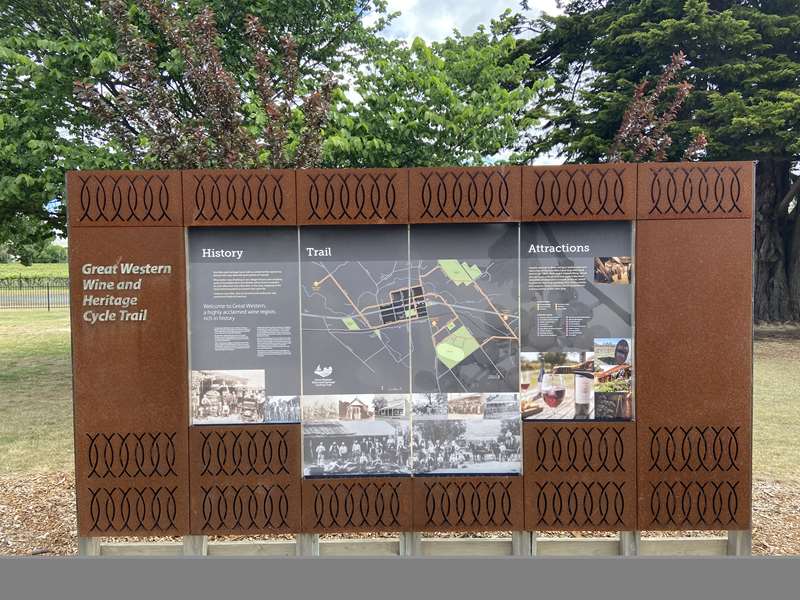
The Great Western Wine and Heritage Cycle trail is a whole family experience, dotted with signs describing the points of interest. What better way of taking in the village's history and sampling some of Australia's best cool climate wines than to meander on your bike from one cellar door to the next, stopping at the many historical points to recount days gone by. Jump on your bike, start at any point and make your way around our historical journey.
Welcome to Great Western, a highly acclaimed wine region, rich in history
In September 1858 the Governor of Victoria, Sir Henry Barkly, visited the mining settlement south east of Pleasant Creek. Following the lure of gold, traders pressured Barkly to have the town surveyed and subdivided.
By September 1859 despite the reticence of George Ewbank, whose Allanvale idyllic lease covered the area, surveyor George Langford had surveyed and named the township 'Great Western'.
There is little doubt Langford named all the streets after famous engineers of the Victorian era. The one common denominator was that they were all connected to railways, so it's often thought the town was named after the Great Western railway in Great Britain.
Another theory is that a previous employer of Langfords, Isambard Brunel, as well as being connected to railways, was the designer of three steamships - one of which was the Great Western built for merchants who formed the Great Western Steamship Co twelve months after the Railway Co in 1838.
1863 saw the beginning of the wine industry when John Pierre and Marie Trouette planted the first vines at their St Peters vineyard. Brothers Joseph and Henry Best, and other vineyards that followed, created an industry which eventually would give Great Western worldwide acknowledgment and put the town firmly on the map as a tourism destination.
Great Western has enjoyed enormous prosperity and recognition from the sheep, gold and wine settlers who worked the land, vineyards and diggings to make it what it is today.
Great Western Wine and Heritage Cycle Trail Map
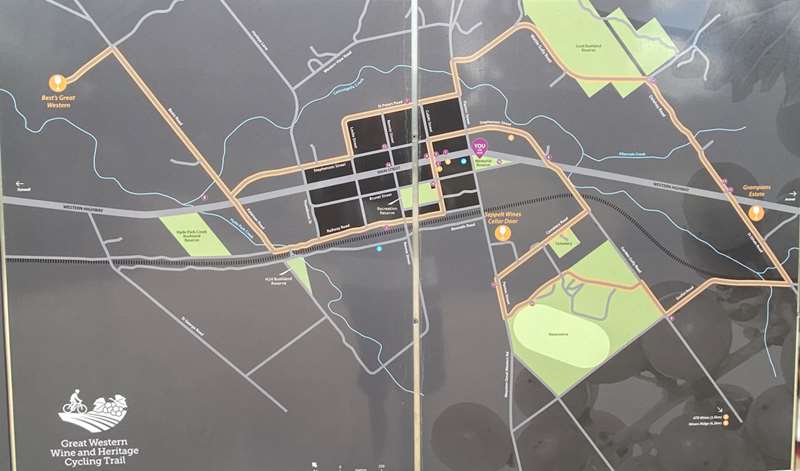
Note: An information sign with this map is located at Great Western Recreation Reserve, Cnr Paxton Street and Brunel Street, Great Western (location of point 18 on the map).
POINTS OF INTEREST
The Weighbridge

Bulls Head Hotel
Cemetery

The Butcher Shop
ATR Wines (3.5km)
Miners Ridge (6.2km)
INTERPRETIVE SIGNAGE
1. Mechanics Institute & Toll Gate

In 1881 The Mechanics and Literary Institute was formed. The first building was opened in 1884 but soon became too small, so it was decided that a new building would be built alongside it. A very active committee, with Marie Trouette as Secretary, raised 263 pounds of the 393 pounds required for the build. It was opened on 14th July 1891.
Many improvements were made over the years and a caretaker was employed until 1953.The Free Library operated at the hall from 1880 until 1956.
2. Great Western Railway Station
The Station was opened in Great Western in 1876. There were eighteen gatekeeper's cottages along the line from Ararat to Stawell, with three in or near Great Western. All sorts of goods were sent from the station - fruit, wine, gravel and wood.
The Goods Shed was not built until 1889. A Signal Box was erected in 1887 and after many accidents at the Paxton Street crossing, an overhead bridge was constructed in 1899. A new station was built in 1955, but almost 30 years later, the station was closed on 30th October 1984, and all the buildings were subsequently demolished.
3. Salinger's General Store
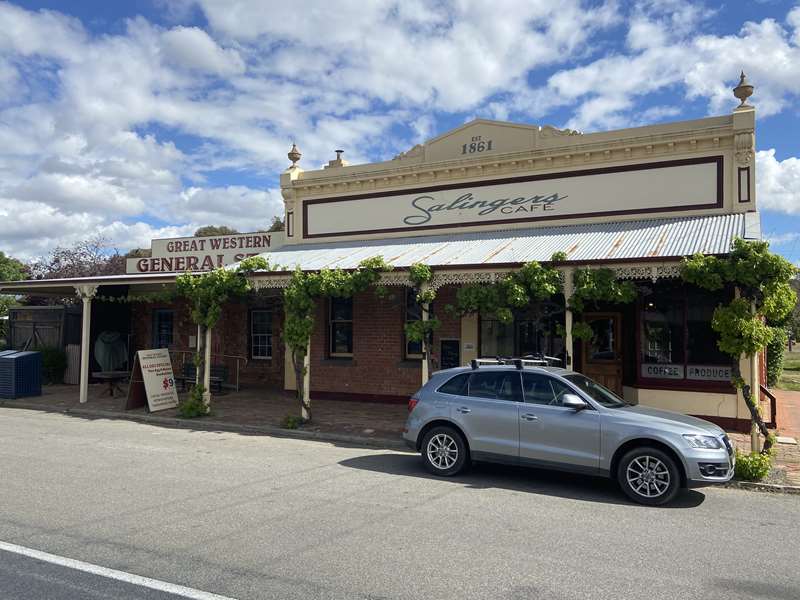
The store was run by Emmanuel Salinger and his family for many years from 1862 until the late 1920s. The wooden store and wine shop remained until 1899 when Emmanuel had the brick store and residence built, as it stands today. The wooden store was moved to the back.
Mr Charles Bullock later added two wooden rooms as storerooms. Miss Carmen Puls ran the store for 18 years followed by Mr and Mrs McManus. The cool room was bought from Sid Brehaut when he closed his butcher shop. Various other people ran the property as a cafe until Meryl Bowers bought the rundown property, renovated the buildings and opened it as The Hermitage craft shop in 1983. It was sold in 2008 and has since operated as a restaurant.
4. General Store
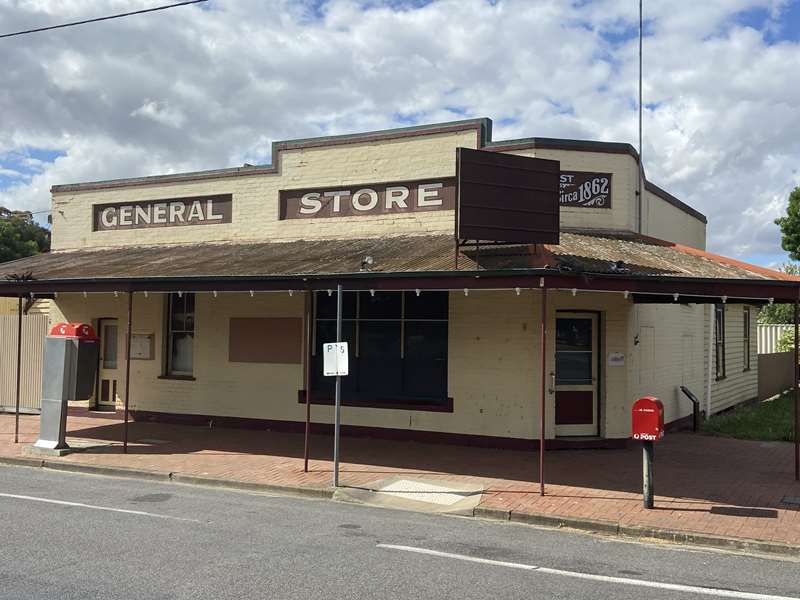
5. Great Western Hotel
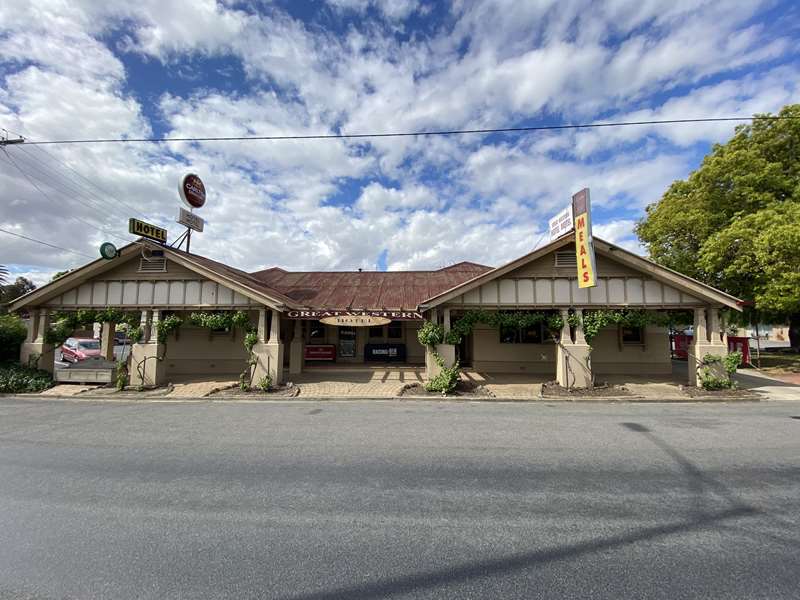
One of 23 hotels that once occupied Great Western, The Great Western Hotel today is on the same site where a store and Post Office called "Five Flag General Store" was built by John Hatch c. 1860. After additions in 1867 the building became known as the "Shakespeare Hotel". By the time of an auction on Saturday 15th June 1872, it was being described as the "Exchange Hotel". Some time later it again become known as the "Shakespeare Hotel".
Henry Holdsworth became the licensee in 1885. The will of the late Henry Holdsworth (owner/licensee) dated 13th December 1987 refers to the hotel as the "Shakespeare Hotel". The present hotel was rebuilt in 1930 at a cost of over 2000 pounds ($4000) and the name changed to "Great Western Hotel" in August 1951.
6. Daly's Winery "St. Nicholas' Vineyard"
7. St Peters Vineyard
8. St George's Vineyard
9. Charles Pierlot's Residence
10. The Racing and Recreation Reserve
11. Chinese gold diggings
12. St Ethel's Vineyard
13. The Golf Paddock
14. The Roman Catholic Church
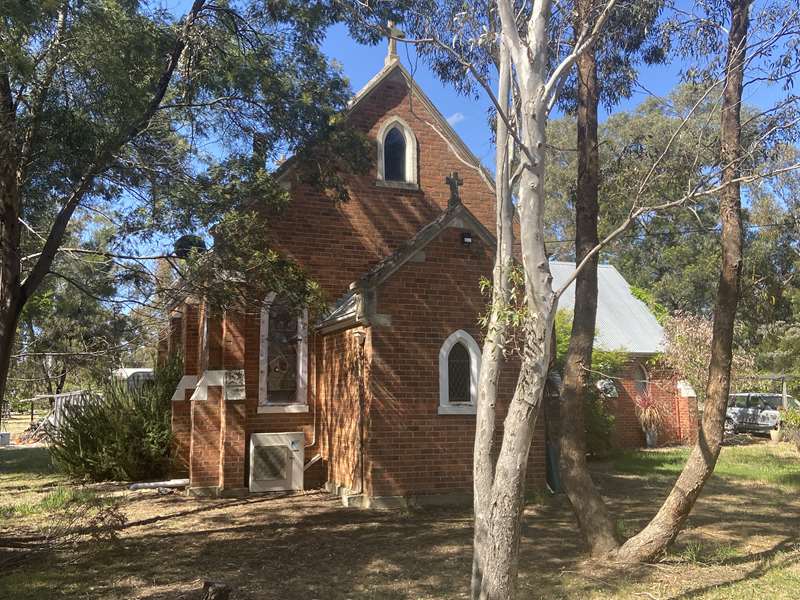
In 1871 a wooden Chapel known as "St Augustine's" was built and donated by the Government. After much fundraising, a new brick church was dedicated on 23rd December 1900. This was called "St Columbanus". The church closed in the early 1970s due to few Catholics in the area, but re-opened on a monthly basis by Fr Davey in 1975 who reverted it to St Augustine's.
15. Anglican Church
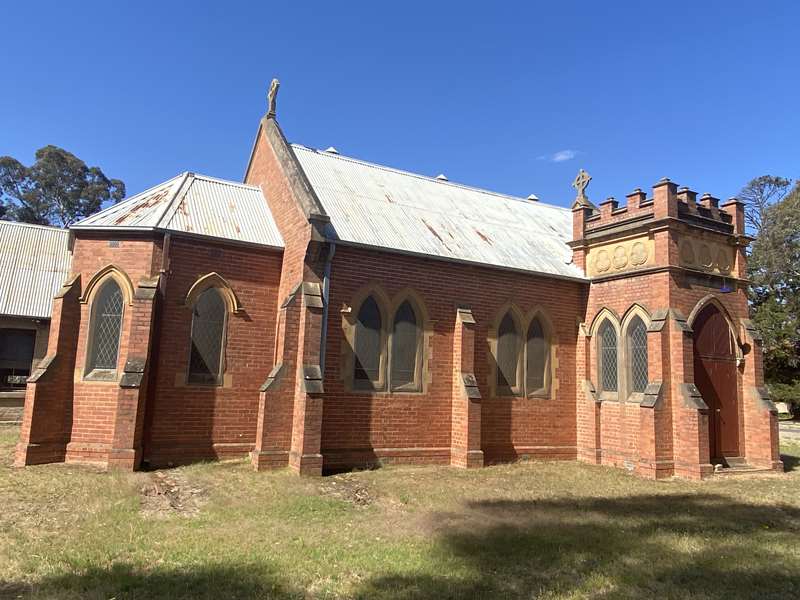
The first church on this site was the Common School which was built in 1867, with the parishioners later erecting the porch at the front of it. The present brick church was built in 1911 at a cost of 555 pounds by Mr A H Barnes and the former church became the Sunday School. Hanging gas lamps were powered by the latest Crescent air gas machine and lit the church until electricity was installed in 1952. Today the Ararat Minister comes once a month for a service.
16. Methodist Church
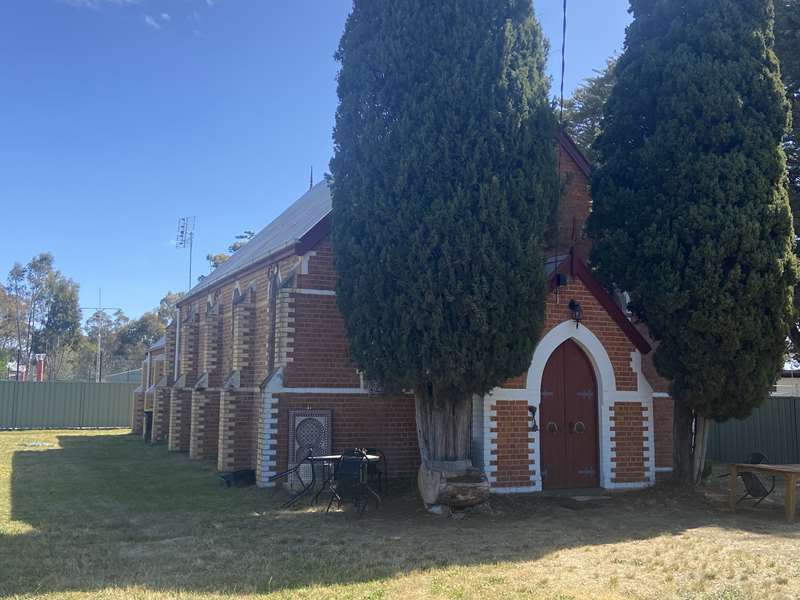
A canvas chapel was erected in 1858 but by August 1862 a new wooden church was built, costing $140. This church served until 1880 when the present brick church was built, costing 619 pounds. The wooden church was moved to the back of the block and became the Sunday School, however was burnt down in 1955 by a scrub fire. It was replaced by an unused school building from Rhymney which was placed beside the back of the brick church.
In 1977 the church became part of the Uniting Church. Church services were taken by either the Ararat Minister or Lay Preacher but due to fewer members, the church closed on 13th December 1998 with the building and site sold to Glen Hurley in 1999. The wooden part was moved to an Olive Plantation up north and the brick church was made into a private residence.
17. Allanvale Homestead
18. The Lock Up

The Tender to build the Lock Up was awarded to E. Chambers in December of 1858, and at the time cost 376 pounds. It was situated in the Police Camp near the Concongella Creek in Stephenson Street. It was constructed as a portable building, buried in the ground with granite blocks and broken glass between the bars. The Police Station was closed in 1912.
The building was moved to Kaniva in 1922, the Lock Up already having been used as a room at a private house opposite the Hall. As part of the Bi-Centennial celebrations in 1988, the Lock Up was moved to the Memorial Park, after it was donated by the then home owner. The land the Police Station was on was sold in 1996.









